#Saint Peter Martyr
Text
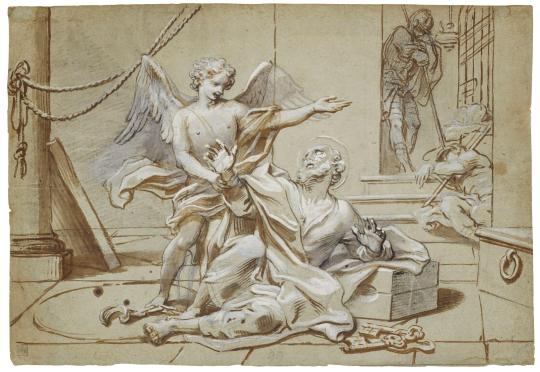
Paolo Gerolamo Piola
Saint Peter released from prison
Black chalk, brush and brown ink, brown and gray wash, heightened with white, on gray paper, 29 x 42 cm, 17th/18th century
56 notes
·
View notes
Text

THE DESCRIPTION OF SAINT PAUL MIKI AND 26 COMPANIONS
Feast Day: February 6
"I am not from the Philippines. I am a Japanese and a Jesuit Brother… Having arrived at this moment of my existence, I believe that no one of you thinks I want to hide the truth. That is why I have to declare to you that there is no other way of salvation than the one followed by Christians. Since this way teaches me to forgive my enemies and all who have offended me. I willingly forgive the king and all those who have desired my death. And I pray that they will obtain the desire of Christian baptism." -St. Paul Miki
The first martyr of Japan, Paul Miki was born to a wealthy Japanese family circa 1562 in Settsu, Osaka Prefecture in Kansai region. At a young age, he entered the Society of Jesus and preached the Gospel successfully.
The church had been implanted in Japan fifty years earlier, and counted over 200,000 Christians. In 1588, the Emperor claimed that he was 'God,' and ordered all Christian missionaries to leave the country within six months. Some of them obeyed, but Paul and many others remained secretly behind.
In 1597, Paul was discovered and arrested along with twenty-five companions. They endured tortures and derision through several towns, with their left ears cut off, before being taken to Nagasaki. After making their confession, they were fastened to their crosses, with iron collars around their necks.
Their valor and bravery were wonderful to behold. They gave thanks to God by singing Psalms 25 and repeating: 'Into your hands, Lord, I entrust my life.'
Standing in the noblest pulpit of the cross, Paul said to the people: 'I am a Japanese by birth, and a Jesuit by vocation. I am dying for the Gospel of Jesus Christ. I do gladly pardon the Emperor, and all who have sought my death. I beg them to seek baptism and be Christians themselves.'
Then, four executioners unsheathed their spears and killed all of them in a short time. Their faces were serene, while they kept repeating: 'Jesus, Mary!'
On June 8, 1862, Pope Pius IX canonized him and his twenty-five companions.
#random stuff#catholic#catholic saints#jesuits#society of jesus#paul miki#paulo miki#pablo miki#peter bautista#pedro bautista#twenty-six martyrs of japan
30 notes
·
View notes
Photo
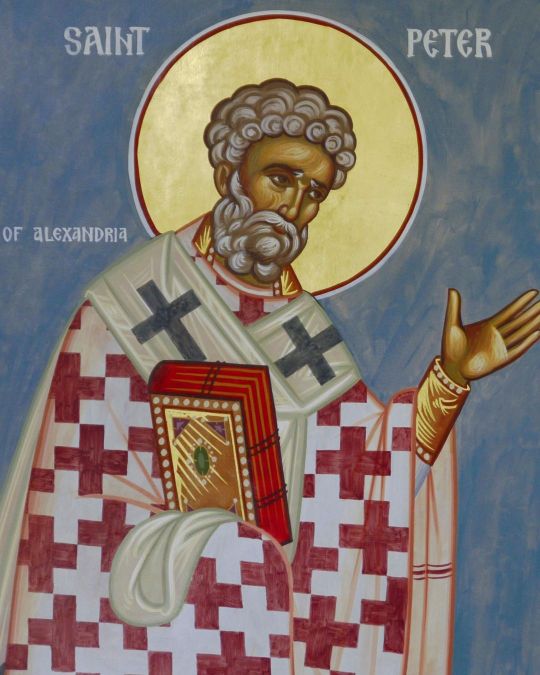
Today we also celebrate the Hieromartyr Peter, Archbishop of Alexandria. Saint Peter was born in Alexandria and grew up an educated man. In 300 AD he was elected Archbishop of Alexandria for his piety. Being driven into exile by the Roman Emperor, Saint Peter travelled through many lands, keeping contact with his Alexandrian flock by letter. Having returned to Alexandria, he secretly visited imprisoned Christians as well as helping the widows and orphans of the area, preaching the Word of God. During this time, the infamous heretic, Arius, denied the divinity of Jesus Christ, attempting to tear the Church apart with his heretical teachings. Saint Peter anathematised the heretic and excommunicated him from the Church. The heretic sent two priests to beg the saint for a lift of the ban, pretending that he had repented. The Holy Peter, seeing through the guise of the evil one, instructed his flock not to believe nor come into communion with Arius. Saint Peter once had a vision of the twelve-year-old Christ who appeared to him with a torn cloak. He asked the Lord who had torn his garment and Christ replied, “that madman Arius has torn it by dividing the people whom I have redeemed by My blood. Do not receive him into Communion with the Church, for he has worked evil against Me and My flock.” Throughout his life, Saint Peter never sat on the Bishop’s throne placed in the altar, but rather on a footstool, claiming that every time he approached the throne, a heavenly light would shine on it, and out of reverence, did not dare to sit there. Having led his flock in justice and piety, the Roman Emperor Maximian heard of him, arrested him, and sentenced him to death. The Alexandrian flock were outraged, even to the point of rioting if needed. To avoid any bloodshed, Saint Peter requested that an opening be made from the back of the prison so that he might be taken to execution in secret. At the time of his beheading, a heavenly voice blessed the Saint. May he intercede for us always + #saint #peter #archbishop #alexandria #egypt #bishop #saintpeter #stpeter #petros #hieromartyr #martyr #heresy #preach #preacher #holy #jesus #christ #christian #orthodox (at Alexandria, Egypt) https://www.instagram.com/p/ClUNkXSLMdi/?igshid=NGJjMDIxMWI=
#saint#peter#archbishop#alexandria#egypt#bishop#saintpeter#stpeter#petros#hieromartyr#martyr#heresy#preach#preacher#holy#jesus#christ#christian#orthodox
12 notes
·
View notes
Text
Lately (and pretty much always) I keep coming back to the idea of Peter as a martyr, particularly sainthood and how that pertains to him— how that idea pretty much overtakes everything in his life and corrupts it into something that isn't his own, because the mantle requires so so much and Peter has so very little to give back. So, of course he does the more (altruistically) "logical" thing... which in turn, only traps him further into that vicious cycle because all Peter ever had to give away was himself.
And he pays for it. Over and over and over again. Forever. Until the end of time. Maybe even beyond it. That's his role. What he was made to be. To take on the burdens of everyone else and to take and say nothing in return— for him to just accept it and assume this larger than life role when (most times) all it ever brings him is anguish, and misery, and chaos, and destruction, and inescapable guilt, and even more sparsely, outright ridicule.
No one thanks him.
Peter is just the personification of this repeating notion that nothing is inherently owed to heroes, even when they sacrifice themselves and their personhood to save something that, at its core, is eternally unsalvageable. There is no end to that duty or sacrifice. He fights for something that will always outlive him. It's absolute devotion to the belief that humans— his people, and thus humanity as a whole— are worth saving and that that belief should be honored. It's his responsibility, after all.
So he honors it. Even when it takes everything from him.
Even when the cost is simply too much... the torment is worth it. The sense of loss and grief are worth it. Peter loses in innumerable ways, and it's never in the same way twice... and yet, it just doesn't stop him. Peter never lets that horrible realization keep him from fulfilling what the universe has demanded of him.


The act of being a martyr, the sacrifice, the turmoil, the sense of duty and the dead you feel indebted to. Your life— giving away your life for them— is the repayment of that oath and he can never escape it. Because if not him, then who?

Peter's entire life is just this over and over and over again:

And this picture below, while it initially has nothing to do with it, I immediately saw it and thought of Peter— of being buried and almost beaten down, mangled and dying from the role and life that was pushed on to him, and still trying to live and be a person through it. That he's trying desperately to escape and he still has some fight left in him. That even when he's broken and almost crushed underneath everything, he'll break free, and crawl, and dig himself out of his own grave... and he has.


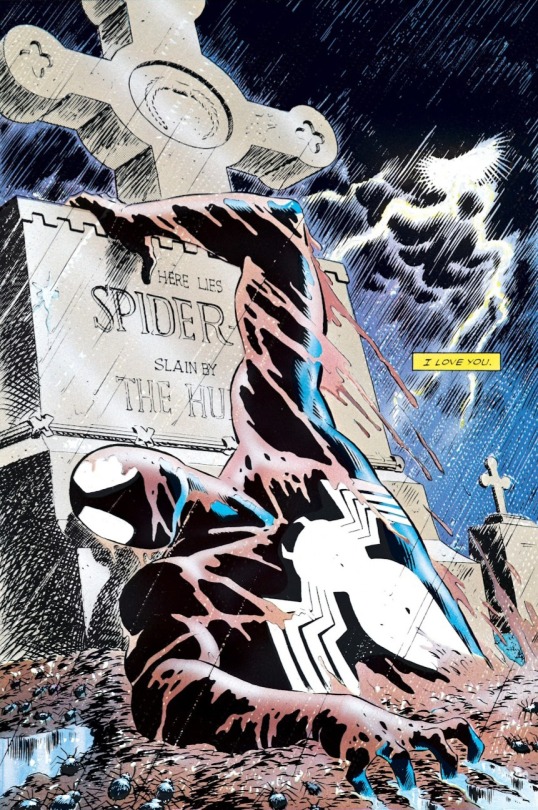
Everything about Peter is so inherently tragic.
Something beautiful and powerful to be looked at and mourned in the aftermath of its slaying, but not worthy enough to save in life, because offering up the sacrificial lamb for slaughter IS the point.
He's the champion. The little guy. The underdog. Humanity's best. The saint among men.
And even more heart wrenching is the knowledge that hardly anyone ever tends to him both in and outside of the suit. In a way, his suffering is solitary in nature. It's his burden— to carry it, to experience the despairing loneliness that comes with it— and though many can lighten it for him, no one can ever truly take it away. The closest anyone comes to doing that is through MJ.
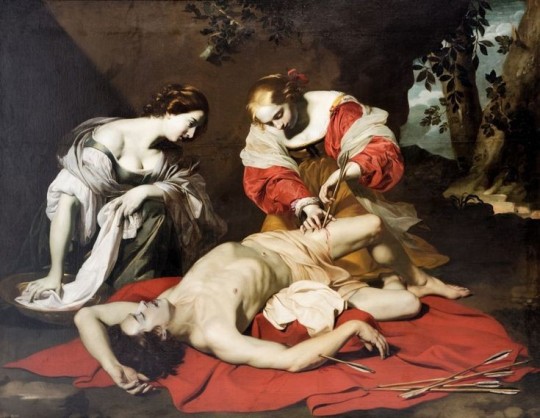

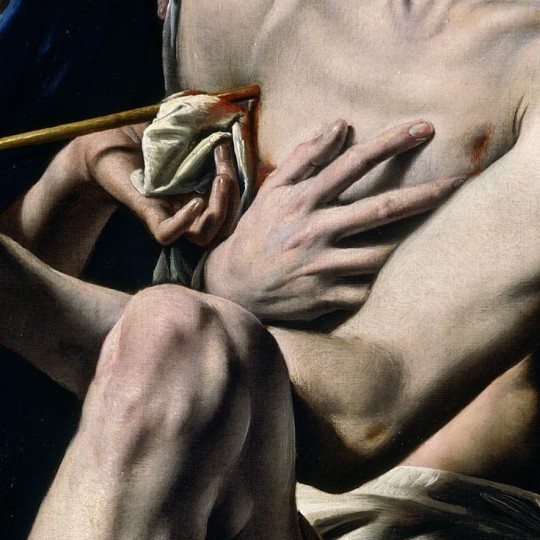
She surpasses what a usual love interest should be. In fact, at times, she's not so much a character than she is another narrative tool to convey how desperately in need of saving and understanding Peter is. She's the mortal woman, the only one who shows him unconditional love (besides May and even that, the love of a "mortal mother" upon a "transcendent holy son," and raising said son who is not truly hers, and guiding him through that duty) and all MJ ever does is stand beside him. She can't help him. She can love him, mourn him, be a pillar for him to lean on and seek relief/shelter, but she can never take what was given to him from him. She is the one who holds the saint's hand, but cannot divert him from his fate.
There's so much more in relation to this— too much— and this is all such surface level analysis, but it's just something that is so pervasive in all of Peter's storylines and so inherently tied to his character that it's pretty hard not to notice it. Peter is just continuously elevated to this... level that no ordinary man should ever be placed at. But he is. And it just drives me absolutely insane. It's horrifying, it's amazing. I love it and it pains me all the same.
#these thoughts are old but i literally think about this all the time#peter is just a martyr and a saint and eternally damned all at once#it's all that catholic guilt baby— well he's protestant but still#i mean yeah he's an atheist and a major hater but he's also my babygirl and that's all that matters#idk im a geek and i love peter sorry to anyone that chooses to read this <3#marvel#peter parker#Spider-Man#spiderman
6 notes
·
View notes
Text
SAINT OF THE DAY (November 26)

Local commemorations of the fourth-century martyr Saint Peter of Alexandria will take place on November 25 and 26.
Although his feast day in the Western tradition is no longer part of the Roman Catholic Church’s universal calendar, he remains especially beloved among Catholic and Orthodox Christians of the Egyptian Coptic tradition.
Tradition attests that the Egyptian bishop was the last believer to suffer death at the hands of Roman imperial authorities for his faith in Christ.
For this reason, St. Peter of Alexandria is known as the “Seal of the Martyrs.”
He is said to have undertaken severe penances for the sake of the suffering Church during his lifetime and written letters of encouragement to those in prison, before going to his death at the close of the “era of the martyrs.”
Both the date of Peter’s birth and his ordination as a priest are unknown. It is clear, however, that he was chosen to lead Egypt’s main Catholic community in the year 300 after the death of Saint Theonas of Alexandria.
He may have previously been in charge of Alexandria’s well-known catechetical school, an important center of religious instruction in the early Church.
Peter’s own theological writings were cited in a later fifth-century dispute over Christ’s divinity and humanity.
In 302, the Emperor Diocletian and his subordinate Maximian attempted to wipe out the Church in the territories of the Roman Empire.
They used their authority to destroy Church properties, imprison and torture believers, and eventually kill those who refused to take part in pagan ceremonies.
As the Bishop of Alexandria, Peter offered spiritual support to those who faced these penalties, encouraging them to hold to their faith without compromise.
One acute problem for the Church during this period was the situation of the “lapsed.”
These were Catholics who had violated their faith by participating in pagan rites under coercion, but who later repented and sought to be reconciled to the Church.
Peter issued canonical directions for addressing their various situations, and these guidelines became an important part of the Eastern Christian tradition for centuries afterward.
Around the year 306, Peter led a council that deposed Bishop Meletius of Lycopolis, a member of the Catholic hierarchy who had allegedly offered sacrifice to a pagan idol.
Peter left his diocese for reasons of safety during some portions of the persecution, giving Meletius an opening to set himself up as his rival and lead a schismatic church in the area.
The “Meletian schism” would continue to trouble the Church for years after the death of Alexandria’s legitimate bishop.
Saint Athanasius, who led the Alexandrian Church during a later period in the fourth century, claimed that Meletius personally betrayed Peter of Alexandria to the state authorities during the Diocletian persecution.
Although Diocletian himself chose to resign his rule in in 305, persecution continued under Maximinus Daia, who assumed leadership of the Roman Empire’s eastern half in 310.
The early Church historian Eusebius attests that Maximinus, during an imperial visit to Alexandria, unexpectedly ordered its bishop to be seized and killed without imprisonment or trial in 311.
Three priests – Faustus, Dio and Ammonius – were reportedly beheaded along with him.
Saint Peter of Alexandria’s entry in the “History of the Patriarchs of the Coptic Church of Alexandria” (a volume first compiled by a Coptic Orthodox bishop in the 10th century) concludes with a description of the aftermath of his death.
“And the city was in confusion and was greatly disturbed, when the people beheld this martyr of the Lord Christ.
Then the chief men of the city came and wrapped his body in the leathern mat on which he used to sleep; and they took him to the church …
And, when the liturgy had been performed, they buried him with the fathers. May his prayers be with us and all those that are baptized!”
5 notes
·
View notes
Text
HOMILY for St Peter Martyr
Acts 28:16-20. 30f; Ps 10; John 21:20-25

Shortly before a hired hitman called Carino split open his skull with a blade, the Dominican friar we honour today, Peter of Verona, had been singing a song. It wasn’t a lack of musical acumen that had led to his murder but rather the fullness of his faith – faith in the one and only true God, and in his Son, risen from the dead; faith that would lead him to follow Christ so perfectly, even as the Lord has summoned his namesake, the apostle Peter, to do.
According to the eyewitness accounts of his martyrdom on the 6th of April 1252, brother Peter had been singing the Sequence hymn sung throughout the Easter Octave, Victimæ Paschali laudes, Sing praises to the Paschal Victim. This beautiful song tells of Christ, the champion over death, who has died and yet lives again. As such, it is a song of Easter hope, and it declares at the end: “We know Christ is truly risen from the dead! On us, you conqueror, King, have mercy!” This declaration of Easter faith fitting prepares St Peter of Verona to die with Christ, with confidence in his mercy, and of rising with Christ to glory. As such, Peter becomes another Paschal victim, dying on Easter Saturday, and so following Christ to the grave and beyond to glory.
Hence, as he died from his wounds, Peter repeated the words of Christ on the Cross: “Into your hands, Lord, I commend my spirit”. And then, with his last breaths, he began to recite the Creed, making it clear that he died in the faith he had lived and preached and taught over and against the Albigensian heresy which believed in a good god and an evil god. Instead, St Peter Martyr, with his dying breath, forgave his killer, prayed for him, and then professed: “Credo in unum Deum”, I believe in one God. This tenacious faith, this brave witness to the Truth and to the Resurrection, right to the end, must have impressed his assassin. For Carino of Balsamo then fled to a Dominican convent, confessed his crime, and he was allowed to live the rest of his life doing penance as a Dominican lay brother. He would come to be venerated as a Blessed in the Order, and his example of penitence is so impressive that some Dominican sisters (and brothers) even carry his name!
However, if Carino was so deeply moved by the sanctity and faith-filled example of St Peter Martyr, then so too was the Church. Peter of Verona was canonised within 11 months of his death, the quickest canonisation ever, and he is venerated as the first martyr of the Dominican Order. In the early legislation of the Order, Dominican churches were required to have, besides the Cross and Our Lady, only two other saints represented in our initially austere churches, namely, St Dominic and St Peter Martyr; as a teenager he had met Dominic in Bologna and some say he was converted from the Albigensian leanings of his parents by St Dominic. St Peter was also venerated as the patron saint of the Holy Inquisition.
One fact that is often glossed over today is that Peter of Verona was not only loved in the Order as a loving and fraternal prior, who gave good advice and promoted community life, but he was also, for the last six months of his life a deeply respected Inquisitor. We might be uneasy about the Inquisition today, but our contemporaries are swift to cancel or silence any questioning of the orthodoxies of our time. For we all realise that, ultimately, ideas matter. So we should know that erroneous ideas, and heresies, and wrongful notions of reality can be and indeed are deeply harmful of the common good, and of the good of a civilisation, and of our individual good. For truth matters, and indeed, the restoration of truth heals a society and leads to its true human progress. The people of St Peter Martyrs’ time knew this well, and like St Paul in the first reading, they risked imprisonment, punishments, and even their lives for the sake of preaching the truth of Jesus Christ, and the one true God who saves us; the indifferentism and irenicism of our age would have struck St Peter Martyr even more deeply than the two blows that mortally wounded him. But, in any case, as an Inquisitor, St Peter was known only for his clemency. So in one of his letters he advises a Dominican superior to be “quick to help others, sound in the advice you give, circumspect in responding to others, and inclined towards patience.”
As Eastertide comes to a close then, it is beautiful to be able to look at one who followed the Paschal Victim so fully: patient and forgiving, merciful and joyful, faithful to the end. May he, filled with Easter graces, pray for us who are still lacking in so many ways. We may not reach his heights of holiness but perhaps, at least, we might be moved by his example to undertake a life of holy repentance as Blessed Carino did. May St Peter and Blessed Carino pray for us!
3 notes
·
View notes
Quote
Against all the probabilities, in due course Nicholas might find himself a saint. He was mysterious, feloniously slain, young, to all appearances clean of heart and life, innocent of evil, the stuff of which martyrs are made.
— One Corpse Too Many (Ellis Peters)
#book quotes#historical fiction#mystery fiction#ellis peters#edith pargeter#the cadfael chronicles#one corpse too many#religion#christianity#catholicism#saints#martyrs#murder
0 notes
Text



1545-1548 Girolamo Romanino - Coronation of the Virgin and St. Dominic between Saints Faustinus, Paul, Thomas Aquinas, Peter Martyr, Antonino, Vincent Ferrer, Peter and Jovita
(Fondazione Brescia Musei)
234 notes
·
View notes
Text
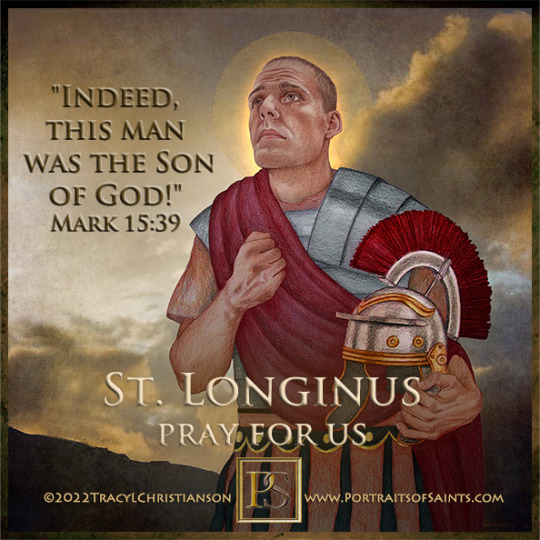
Saint Longinus the Centurion
Died: 1st century
Feast Day: October 16 (new) March 15 (trad.)
Patronage: the blind and those with poor eyesight, for discernment, Mantua
Saint Longinus was the centurion that pierced the side of Jesus at the Crucifixion. He was losing his eyesight at the time and when Christ’s blood fell into his eyes his sight was restored. He then said, “Indeed, this man was the Son of God.” (Mark 15:39) Subsequently, he received instructions from the apostles, converted, left the army, and became a monk. He was arrested, tortured (teeth pulled out and tongue cut out yet could still speak clearly), and martyred. His relics are in Rome and his lance is contained in one of the four pillars over the altar in the Basilica of St. Peter’s.
Prints, plaques & holy cards available for purchase here: (website)
96 notes
·
View notes
Text

Throws him in a meat grinder (still a WIP and rendering this takes me forever)
SO
You know how there is this quote in the game about "You are Peter, and on a rock you've built something that should not be"
And it's a reference to Saint Peter with the whole shabang and
Peter deserves an icon as a saint, a martyr even? (Hate the church fandom but they popped off with the imagery)
#pathologic#peter stamatin#pathologic classic hd#my wet and pathetic meow meow#pathologic fanart#art
135 notes
·
View notes
Text

Lombard School
Martyrdom of St. Peter of Verona
Oil on canvas, 222 x 157 cm, second third of the 17th century
20 notes
·
View notes
Text
This is it; this is the Big 'Un that's been knocking around in my head since the bookclub's inception.
When it comes to mentions of the biblical parallels in Trigun, I've seen that Wolfwood is most frequently discussed as a Judas figure. I think it's important, though, to note that carrying out the Judas role to Vash's Jesus was a job he was ordered to take, and it's one he went through the motions of following while having the ulterior motive of killing the one who gave him the order in the first place. In fact, when Wolfwood does turn traitor, it's actually Knives and the GHG he chooses to betray. He ends up Judas-ing the guys who assigned him to the Judas mission - that's some sweet irony!
And as Wolfwood's time in the story draws to an end, he takes the path completely contrary to Judas' ignominious end by suicide. He instead takes a leap of faith and dares to place his trust in Vash's vision for humanity's future. His faith remains imperfect, but in the midst of all his doubt and uncertainty, he persists anyway.


This last stand of his becomes Wolfwood's ultimate affirmation of his devotion to Vash's ideals, and he effectively becomes a martyr, which places him far outside the image of Judas. In fact, I think that when we look back on his character arc as a whole, we can see how it more neatly lines up in trajectory with the story of another apostle: Peter.
Like Peter in the gospel narratives, Wolfwood finds it difficult to have the kind of faith that is asked of him. Vash goes into his battle with Rai Dei insisting to Wolfwood that he can finish the conflict without taking a life, but Wolfwood intervenes against Vash's wishes because he was worried about Rai Dei's next move. Peter sees Jesus walking on water and goes out to join him, but with the rough winds blowing around him, Peter becomes overwhelmed by fear and begins to sink. After these failures of faith in their respective stories, Peter and Wolfwood are then chastised by the men they follow.
Matthew 14:31 (NRSV) - Immediately Jesus reached out his hand and caught him. "You of little faith," he said, "why did you doubt?"
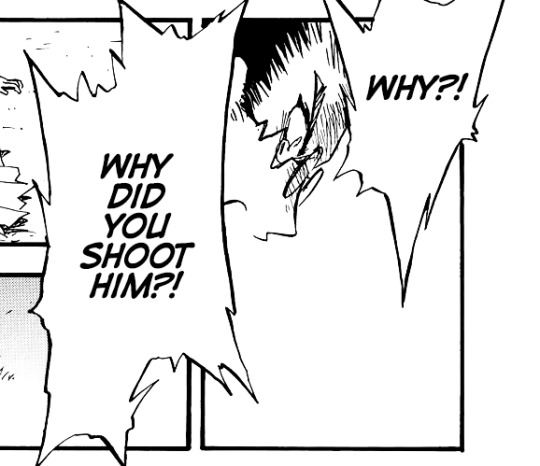

And it's these struggles with doubt, these moments of fear and cynicism overtaking faith that are so instrumental to the Christian perspective on salvation with its message of "You are flawed by nature, but you are loved beyond all comprehension nonetheless. Accept this love that it may save you and change you."
In Peter's case, although he is singled out multiple times for his failures (e.g. denying Jesus three times), he still holds a special place of prominence among Jesus' disciples. The 21st chapter of John features a conversation between Peter and the resurrected Jesus in which Peter affirms his love for Jesus three times (a reversal of the three times he denied Jesus), and Jesus responds by instructing Peter to care for his flock. After Jesus ascends to Heaven, Peter continues the work set out for him in building the early church until his eventual martyrdom, which, according to church tradition, occurs via upside-down crucifixion (see Caravaggio's rendition here). Interestingly, Wolfwood's martyrdom also involves lots of grievous bodily harm being dealt by crosses.

So the saint gets brought to death's doorstep, and that brings us to the infamous whiskey bottle

Others have already pointed out that "The Bride" likely refers to the Bride of Christ. This excerpt from the Catechism of the Catholic Church sums up the concept:
The unity of Christ and the Church, head and members of one Body, also implies the distinction of the two within a personal relationship. This aspect is often expressed by the image of bridegroom and bride. The theme of Christ as Bridegroom of the Church was prepared for by the prophets and announced by John the Baptist. The Lord referred to himself as the "bridegroom." The Apostle speaks of the whole Church and of each of the faithful, members of his Body, as a bride "betrothed" to Christ the Lord so as to become but one spirit with him. The Church is the spotless bride of the spotless Lamb.
Now Peter is of particular importance when talking about the Church as an institution, because in the Catholic tradition, Peter is believed to have been granted a distinguished position of authority as the very foundation of Jesus' church, and every Pope is considered a successor to Peter in their occupation of the Church's highest office.
So Peter = Pope = the head of the Bride of Christ. And if we take the reading of Wolfwood as a Peter analogue.... you see where we're going. The Bride of Christ has been sanctified through a powerful demonstration of sacrificial love and prepared for the wedding to the bridegroom, but right here Yasuhiro Nightow subverts the biblical metaphor to devastating effect. The wedding doesn't come to fruition, because Vash can't bring himself to step into the role of the heavenly bridegroom. In this moment, he just feels all too painfully human in his grief. Wolfwood ascends - celebrated across the sky by those he saved with his selfless love, but Vash descends - acting as an ordinary person mourning the loss of a loved one.

John 13:36 (NRSV) - Simon Peter said to him, “Lord, where are you going?” Jesus answered, “Where I am going, you cannot follow me now...."
#trigun#trigun maximum#trigun spoilers#trigun maximum spoilers#suicide mention#cw suicide mention#religion mention#christianity mention#trigunbookclub#the bookclub is a funeral procession this week#hugs going out to all of you#Guns&God meta
302 notes
·
View notes
Note
I don't usually do this sort of thing
but its sort of an All-Hands-On-Deck situation.
Please pray for the mother of my friend,
She was diagnosed with cancer some time ago,
but it has since spread to her brain.
Of course I will pray, may God bless her and provide her with healing and comfort. And may God also bless and comfort those family members, friends, and all those that know her who are also in pain and anxiety because of her suffering.
Under the Readmore, I have attached some prayers for those with cancer that you might find to be helpful. I would especially recommend looking into some of the Patrons associated with Cancer patients and asking for their aid. For example St. Parthenios, St. Nektarios, St. Panteleimon
Through Your illuminating and sanctifying Spirit, Lord, guide through medical science those who are seeking through studies to exterminate its wickedness, reveal to them the medicine and the way of healing, and grant strength to those who are suffering and patience and respite in their pain, rewarding them all with the healing of their soul and body, through the intercessions of our Most-blessed Lady the Theotokos and Ever-Virgin Mary, the Life-Giving Spring, whose waters in the Queen City were poured over those who were sick with cancer and their suffering ceased, as well as those of our Holy Father Parthenios, Bishop of Lampakos, the holy, glorious and wonderworking Unmercenaries, the holy, glorious Great Martyr and Healer Panteleimon, and all Your Saints. Amen.
--
O Most-Pure Mother of God, O Queen of All! Hearken unto our much-afflicted sighing and look upon thy children, suffering from unhealed ailments, who fall down before thee with faith! As a bird covers its nestlings with its wings, so do thou now, who art ever present, cover us with thy greatly healing omophor in that place where hope be.
There where bitter sorrows overcome us, there will patience and rest be revealed. Where the torment of despair dwells in the soul, there will shine the ineffable Light of Divinity! Console the fainthearted, strengthen the weak, bestow softening and enlightenment upon embittered hearts. Heal thine ailing people, O All-merciful Queen!
Bless the minds and hands of our physicians, that they might serve as instruments of the All-powerful Physician, Christ our Saviour. We pray that thou mightest truly live with us, O Sovereign Lady!
Stretch out thy hands, filled with healing and cures, O Joy of the sorrowful, Consolation in afflictions, that having speedily received miraculous help, we may glorify the Life-creating and Undivided Trinity, the Father and the Son and the Holy Spirit, unto ages of ages. Amen.
--
O Christ, Who alone art our Defender: Visit and heal Thy suffering servant [name], delivering her from sickness and grievous pains. Raise her up that she may sing to Thee and praise Thee without ceasing, through the prayers of the Theotokos, O Thou Who alone lovest mankind.
--
Lord have mercy.
O Lord Almighty, the Healer of our souls and bodies, You Who put down and raise up, Who chastise and heal also; do You now, in Your great mercy, visit our sister (Name), who is sick
Stretch forth Your hand that is full of healing and health, and get her up from her bed, and cure her of her illness.
Put away from her the spirit of disease and of every malady, pain and fever to which she is bound
If she has sins and transgressions, grant to her remission and forgiveness, in that You love mankind.
Yea, Lord my God, pity Your creation, through the compassions of Your Only-Begotten Son, together with Your All-Holy, Good and Life-creating Spirit, with Whom You are blessed, both now and ever, and to the ages of ages. Amen.
--
O Lord our God, Who by a word alone did heal all diseases, Who did cure the kinswoman of Peter,
You Who chastise with pity and heal according to Your goodness;Who are able to put aside every sickness and infirmity, do You Yourself, the same Lord, grant aid to Your servant _____________and cure them of every sickness of which she is grieved.
Send down upon them Your great mercy, and if it be Your will, give to _____________ health and a complete recovery; for You are the Physician of our souls and bodies, and to You do we send up Glory: to the Father, Son and Holy Spirit, Both now and ever, and to the ages of ages. Amen
--
O God, our help in time of need, Who are just and merciful, and Who inclines to the supplications of His people.
Look down upon ____________and have mercy on them and deliver them from the trouble that now besets them.
Deal with ____________ not according to their iniquities, but according to Your manifold mercies, for we are the works of Your hands, and You know our weaknesses.
I pray to you to grant ____________ Your divine helping grace, and endow them with patience and strength to endure their hardships with complete submission to Your Will.
Only You know our misery and sufferings, and to You, our only hope and refuge, we flee for relief and comfort, trusting in Your infinite love and compassion, that in due time, when You know best, You will deliver ____________ from this trouble, and turn their distress into comfort.
We then shall rejoice in Your mercy, and exalt and praise Your Holy Name, O Father, Son and Holy Spirit, both now and forever and to the ages of ages. Amen
50 notes
·
View notes
Text

TThough your 69dy ii2 broken and 2ufferiing, morTTiify the fle2h and break free of your C)(AINS
- Troll Saint Peter, The Martyr Twofold, probably
Some sketchbook doodling that got out of hand lol I will never not go feral over bullshit religious imagery
#Homestuck#Mituna Captor#The Psiioniic#Splickedydoodles#Amputation#bare chest#anyway I have lots of feelings about the psiioniic surprising nobody probably#SAD MAN.....................#i literally started this picture because I wanted to draw him with hugely long pointy horns and it did indeed get WILDLY out of control#me a kid who was raised a brainweird repressed queer methodist: I think....i can have little a christian symbolism where it shouldn't go :)#I can have little a somewhat blasphemous co-opting of christian imagery for these fictional aliens.... as a treat :)
458 notes
·
View notes
Text
May 11, 2023
Earlier today, Pope Francis declared that 21 Coptic Orthodox Christians, who were beheaded by Islamic militants in Libya in 2015, would be added to the Roman Martyrology. Francis made the announcement during an audience with Pope Tawadros II, the leader of the Coptic Orthodox Church of Alexandria. The “21 Coptic New Martyrs of Libya,” as they are called, were martyred on February 15, 2015. Less than a week later, they were declared saints in the Coptic Orthodox Church by Pope Tawadros. The Copts celebrate their feast on the anniversary of their death, February 15, and it appears that this will also be their feast day on the Roman calendar.
The world was shocked in February 2015, when a 5-minute video was uploaded to the internet by ISIS militants. The video showed the 21 kidnapped men in orange jumpsuits being beheaded on a beach near the Libyan city of Sirte. 20 of these martyrs were Egyptian Copts who had gone to Libya to do construction work. The last member of the group, Matthew Ayariga, was a fellow worker from Ghana. It is said that he told the executioners, “Their God is my God. I will go with them.” There has been some question over whether he was already Christian or whether the witness of his 20 coworkers led to his conversion, but nevertheless, his Christian witness and solidarity are inspiring. It was reported that as they died, they chanted hymns and prayed aloud.
The deaths of these men as Christian martyrs is undeniable. The extraordinary photos of Blessed Miguel Pro, a Catholic priest who was executed by the Mexican government in 1927 during the Cristero War — taken just moments before the he was shot by the firing squad — are perhaps the only other photographic images recording a Christian martyrdom as it happened. And yet the recognition of the 21 martyrs as Catholic saints is unprecedented for several reasons.
The primary reason, of course, is that the Coptic Orthodox Church is not in full communion with Rome. The Copts are Oriental Orthodox (as opposed to Eastern Orthodox), because they split from the other Christian churches in the year 451 at the Council of Chalcedon due to differences over the nature of Christ. They are also referred to as “Non-Chalcedonian Orthodox Churches.” This means that they recognize the first three ecumenical councils, whereas the Eastern Orthodox recognize seven, and the Catholic Church recognizes 21 ecumenical councils.
After more than 15 centuries, our hope of reunion may seem remote. After all these years, the two Churches have independently developed their own traditions, theologies, forms of worship, and prayers. Yet some things have remained the same. Both Churches have maintained apostolic succession and the sacraments: Pope Francis is the successor of St. Peter and Pope Tawadros is the successor of St. Mark. In recent decades, the relationship between the Catholic Church and the Coptic Orthodox Church has become closer. For example, in 2017, Popes Francis and Tawadros made a joint statement indicating mutual acceptance of the validity of baptism in both Churches.
Pope Francis has praised the Martyrs of Libya many times, and today he recalled our shared baptism, as well as the blood of martyrs that enriches the Church. He said, “These martyrs were baptized not only in the water and Spirit, but also in blood, a blood that is the seed of unity for all of Christ’s followers.” In the past, the pope has discussed how we must realize that we, the baptized, have much more in common than what divides us. This shared recognition of sainthood between the two Churches is a significant step towards Christian unity.
This sets a new precedent. In 1964, when the Ugandan Martyrs were canonized by Pope Paul VI, St. Charles Lwanga and the other 21 Catholics among his companions were declared saints. The 23 Anglicans who were martyred alongside them were mentioned briefly in the pope’s homily, when he said, “And we do not wish to forget, the others who, belonging to the Anglican confession, met death for the name of Christ.”
Another reason why today’s announcement is unique was that Pope Francis did this by an official act. The Roman Martyrology is the official list of saints officially recognized by the Latin Church. Many Eastern Catholic Churches have their own processes for canonizing saints according to their traditions. Historically, when groups of Eastern Catholics have come into full communion with Rome, they will bring along their saints and prayers and traditions. Many of these saints aren’t officially canonized by Rome, and they are usually only venerated in their own tradition. By inscribing the names of these martyrs in the Roman Martyrology, Pope Francis has made it clear that these martyrs are to be venerated by Roman Catholics as saints.
Finally, in declaring them saints today, Pope Francis sidestepped the typical canonization process. They are saints, without having passed through the usual stages of Servant of God, Venerable, and Blessed. This “skipping” of steps is commonly referred to as “equipollent canonization.” Essentially, when a pope declares someone a saint by an official act, that person is recognized as a saint in the Church. This is not the first time Francis has moved a case along in this way. For example, when he canonized Popes John XXIII and John Paul II in 2014, he waived the requirement of a second miracle for John XXIII so that the two popes would be canonized on the same day. In 2013, he elevated the Jesuit Peter Faber, whose status had lingered at “Blessed” since 1872.
Perhaps the most interesting case is that of St. Gregory of Narek, an Armenian monk venerated as a saint in the Armenian Catholic Church and the Armenian Apostolic Church. Unexpectedly, Pope Francis named him the 36th Doctor of the Church in 2015. Living from in the mid-10th century through the early 11th, St. Gregory lived at a time when the Armenian Church was not in communion with Rome. After several failed attempts at reunion, the Armenian Catholic Church was officially recognized as an Eastern Catholic Church in 1742. Interestingly, the Armenian Catholic eparchy of Buenos Aires (established in 1989 by Pope John Paul II) is called the Eparchy of Saint Gregory of Narek. Perhaps this is how Pope Francis became familiar with the saint.
We Christians are blessed with a wide variety of saints from all sorts of backgrounds. They help make up the beautiful tapestry of the people of God — praying for us, interceding for us, and inspiring us. This is something worth celebrating.
21 Coptic New Martyrs of Libya, Pray for Us!
Mike Lewis. Bolded emphases added.
#Catholicism#Oriental Orthodox Christianity#Christianity#saints#martyrs#Libyan Martyrs#My Pope#Pope Tawadros II#Ugandan Martyrs#Miguel Pro
122 notes
·
View notes
Text
Baby name ideas for the Empires Crew
Cause apparently yall need some now?
SCOTT:
Theme: colors
Scarlet
Amber
Violet
Cyan
Gray
Ash (associated with gray)
Beryl (a pale green stone)
Bianca (means white)
Carmine (crimson red)
Fawn (light brown)
GEM:
Theme: Sun
Citrine (light callback to s1 cause citrine is a stone formed when amethyst experiences intense heat)
Sunny
Apollo
Helios
Crystal
Peach
Flora
Alba (means Dawn)
Soleil (French sun name)
Star
JOEL:
Theme: gods/holy/Greek
Blessing
Hera
Theo (means ‘gift of god’)
Pandora
Ares
Eudora (Greek name meaning ‘generous gift’)
Skye
Achilles
Orion
Ouranos (Greek spelling of Uranus, father of the Titans and also a word meaning “the heavens”
KATHERINE:
Theme: dichotomy of glimmer grove/strength/beauty
Lilac
Lavender
Janus (words with contradictory meaning are sometimes called “Janus words”)
Hecate (goddess of witchcraft)
Persephone
Tempest
Farris (‘strong as iron’ according to the website I’m looking at)
Valentine (both a romantic association as well as having ‘strong’ as an earlier meaning)
Sterling (steel)
Belle
OLI:
Theme: music/independence
Harmony
Lyra
Aria
Viola
Lark
Cadence
Wolfgang
Rhythm
Robin
Spirit
JIMMY:
Theme: strength/common western names
Barrett (mighty as a bear)
Billy/Billie
Oak
Cash (last name if a famous singer)
Dakota
Beau
Daisy
Wynona (first name of a famous singer and a personal favorite of mine)
Cheyenne
Colton (I know so many yeehaw boys named Colton it’s an epidemic)
LIZZIE:
Theme: animals
Kitty
Wren
Leo
Wolf
Draco
Raven
Kit
Dove
Ursula (from ‘Ursa’ meaning bear + light callback to season 1)
Mariposa (butterfly)
SAUSAGE:
Theme: peace/safety/protection/rabbits
Faith
Jack (jackrabbit)
Serenity
Peter (Peter cottontail)
Olive/Olivia (olive bran em has symbol of peace)
Alexis/Alexander/Alexa etc. (All meaning protector of mankind)
Atlas
Angelo
Anthea (goddess/flowers)
Crysanthos (golden flower, name of a Saint)
PIX:
Theme: history, ancient stuff, stones, memory (amendment: I couldn’t find many good names so I just found a bunch of really old names)
Sophia (lover of wisdom/knowledge)
Athena
Beowulf (both a name meaning ‘intelligent wolf’ and the oldest known work of Anglo-Saxon literature)
Sage
Alareiks (gothic name meaning ‘ruler of all’ modernized as Alaric but I think Pix would use the older version)
Áleifir (old Norse form of Olaf and that is such a downgrade on spelling why did we ever stop using the original spelling????? Also means ancestor’s legacy which is PERFECT)
Caecelia (original Latin spelling of Cecelia, means both “blind” and is the name of an ancient religious martyr)
Cúán (“little wolf” in Old Irish and I think that’s just cute)
Demophon (literally “the people’s voice” in Ancient Greek)
Ingo (an old name and also a reference to a character who accidentally travels back in time in Pokémon: Legends Arceus) (I’m running out of ideas can you tell?)
JOEY
Theme: water, treasure
Diamond (it’s not that weird I went to high school with a girl named diamond)
Jade
Cordelia (apparently means daughter of the sea)
Hudson (literal name of a body of water on earth)
Caspian (literal name of a body of water on earth)
Opal
Gold
Sapphire
Tiara
Jasper (a personal favorite + matching initials)
FWHIP:
Theme: names with negative meanings, more stones (no I didn’t use them all on Joey’s list actually)
Lapis
Jet
Onyx
Ruby
Topaz
Deidre (sorrowful)
Kennedy (misshapen head)
Cain (I don’t think I need to explain this one. It’s also a favorite name of mine)
Cameron (crooked nose)
Lorelei (literal translation is ambush Cliff, but colloquially the meaning is ‘a woman who leads a man to his death’ which is metal as fuck)
SHELBY:
theme: herbs/witchy stuff/creepy stuff
Damien
Desdemona (Ill-fated one)
Rosemary (both an herb and a character in a classic horror film)
Nyx
Poe
Salem
Blair
Belladonna (comes with the literal translation of ‘beautiful woman’ as well)
Morrigan (literally ‘phantom queen’ and a figure in Irish mythology)
Dusk
FALSE (if she ever logs in to participate)
Theme: obnoxiously British as befitting a steampunk theme
Silas
Ambrose
Augustus
Eleanor
Gwendolyn
Scarlett
Theodosia
Lysander
Wesley
Luther
#empires smp#scott smajor#solidarity gaming#mythical sausage#fwhip#joey graceffa#shubble#katherine elizabeth#geminitay#the orion sound#I’m half tempted to @ Scott#someone braver than me can lol
73 notes
·
View notes